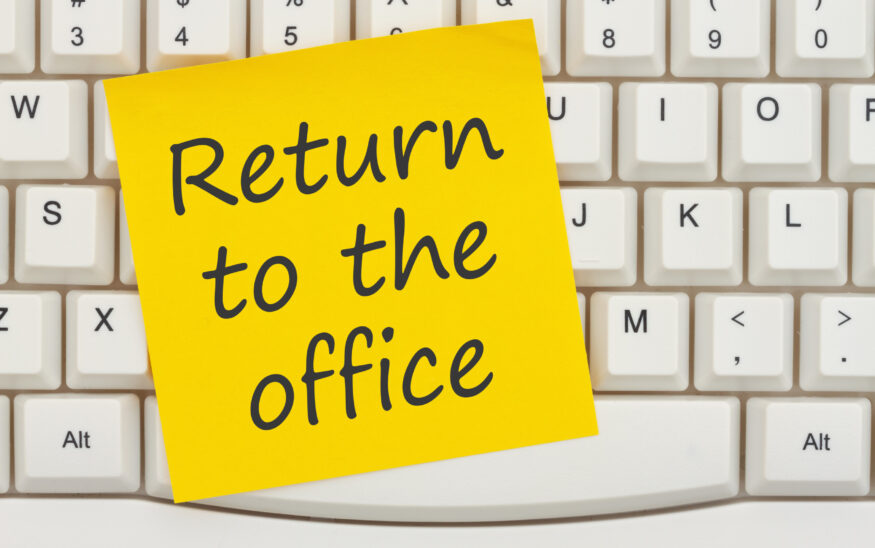Navigating the Post-Pandemic Workplace: Struggles, Solutions and the Return to Office Culture
Navigating challenges and implementing solutions amidst remote work dynamics, real estate constraints and changing workplace policies.
Anthony Albanese //July 28, 2023//


Navigating the Post-Pandemic Workplace: Struggles, Solutions and the Return to Office Culture
Navigating challenges and implementing solutions amidst remote work dynamics, real estate constraints and changing workplace policies.
Anthony Albanese //July 28, 2023//
Over the last three years, many companies did what they deemed necessary to keep their employees happy in the face of a high unemployment rate, low labor participation rate and high inflation.
They surveyed employees on their willingness to return to the office, and for how many days, with or without a dedicated seat. Some performed space planning, and even started to negotiate deal terms based on these plans. All this, ultimately, to find that their employees either didn’t want to share a seat or all wanted to be in on the same days — resulting in a need for just as much space, if not more. As such, the overarching trend of today is that of a slow revival of pre-pandemic office layouts, with the addition of more conferencing.
READ: How To Balance Supporting Your Remote Workers and In-office Employees
Remote work is straining employees and company culture
Time and more accurate data collection have provided a better understanding of the implications of remote work. Chief among these are hindered communication, higher attrition and stifled career development. Employee attrition is approximately 79% higher for remote employers versus hybrid employers, and approximately 51% higher for remote employers versus office-centric employers, according to LinkedIn Talent Insights.
In-person presence is indispensable when it comes to building company culture and curating mentorship — especially for certain subsets of employees. A working study by economists from the Federal Reserve Bank of New York, the University of Iowa, and Harvard University has dubbed this phenomenon “the power of proximity,” noting its particular importance for younger employees. Additionally, the researchers found that in-person benefits only apply when the entire team is present — even one remote teammate can result in decreased collaboration between remaining employees.
Productivity and culture become incredibly important when times are tough, and businesses need to dig deeper to solve problems. Companies are putting themselves at serious risk when employees are disconnected and trust erodes.
READ: How to Prevent Loud Quitting — Strategies to Boost Employee Engagement and Culture Fit
Expected real estate savings are not being realized
Expected real estate savings from overall portfolio downsizing are not being realized by the large majority of companies. Many employers are paying more per square foot for higher quality space or investing in additional amenities to improve employee experience.
This, combined with heightened turnover from remote work, is driving increased expenses. Economic constraints are also in play, with interest rates top of mind for many corporate office users and investors alike. Historically low leasing activity and significant sublease space on the market are further fueling risk aversion among lenders and building owners.
Given the influx in vacant space, most tenants would think this is a great time to strike a deal. However, in many cases the concessions or upfront capital contributions from landlords are becoming increasingly constrained. Construction costs are still elevated at a time when many tenants are looking to rework their layout, and security deposits are being heavily scrutinized as owners and lenders focus on credit quality. These factors are causing companies to revisit existing space conditions, leading to a higher usage of the pre-pandemic buildout.
READ: How Do Interest Rates Impact Real Estate Investing?
Pre-pandemic policies are seeing a revival
Between lackluster retention, collaborative dysfunction and minimal real estate savings, office users are shifting away from pandemic-era work policies and returning to a more traditional model. Last year saw a 13.4% drop in the share of businesses operating hybrid models, with the financial sector experiencing an even more dramatic decrease, from 44.9% to 22%.
Remote work will persist for some organizations. Companies with less-specialized workforces and easily measured productivity standards, such as call centers or late-cycle mid-cap tech companies, continue to show a higher propensity for remote work, albeit a shrinking share.
And a return to the office and pre-pandemic policies doesn’t mean employees aren’t seeing change. Employers are investing in more collaboration areas and new technologies to ensure a superior employee in-office experience.
The next step for companies
Companies have put in a great deal of time and effort over the last three years to accommodate massive societal changes to the workforce. Going forward, they should not let time be their enemy in considering a revival of the historic office approach.
Companies should also be transparent in their intentions, fostering predictability at a time when very little exists. Communication builds trust and strengthens employees’ understanding of how the office serves them and their work.
READ: Managing a Remote Work Team with Communication and Ease
Part of this means becoming more comfortable enforcing stricter return-to-office policies. Sixty-five percent of companies surveyed in CBRE’s Spring Occupier Survey reported requiring some degree of in-office work, but only 57% are tracking attendance. This lack of enforcement discredits the policy and breeds distrust among employees.
Finally, people are the most important amenities to any space. It should be reinforced to employees that they are respected and valued, and that their physical presence in the office makes a difference.
 Anthony Albanese and Nicholas Weld specialize in office occupier representation at commercial real estate services firm CBRE in Denver. They lead a team of specialists focused on Downtown, Southeast, Northwest, and Boulder, as well as industry verticals. The team takes a consultative approach that is tailored to each client to make informed decisions and creatively problem-solve. By leveraging CBRE’s global real estate technology and platform, theyhelp clients visualize the impacts of their real estate decisions through customized service offerings, such as location analysis; lease negotiation; global portfolio management; workplace strategy; financial modeling; lease versus own analysis; project management; and labor incentives, among others.
Anthony Albanese and Nicholas Weld specialize in office occupier representation at commercial real estate services firm CBRE in Denver. They lead a team of specialists focused on Downtown, Southeast, Northwest, and Boulder, as well as industry verticals. The team takes a consultative approach that is tailored to each client to make informed decisions and creatively problem-solve. By leveraging CBRE’s global real estate technology and platform, theyhelp clients visualize the impacts of their real estate decisions through customized service offerings, such as location analysis; lease negotiation; global portfolio management; workplace strategy; financial modeling; lease versus own analysis; project management; and labor incentives, among others.


























